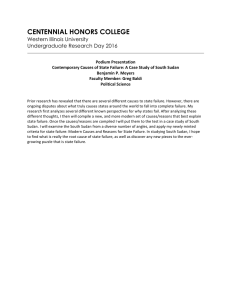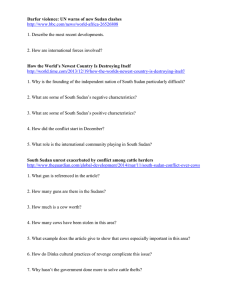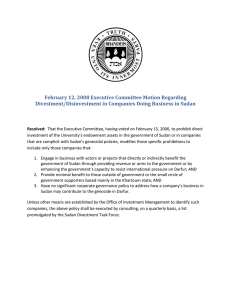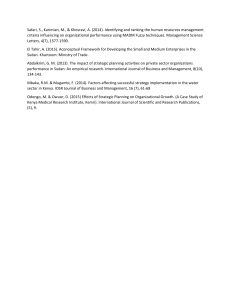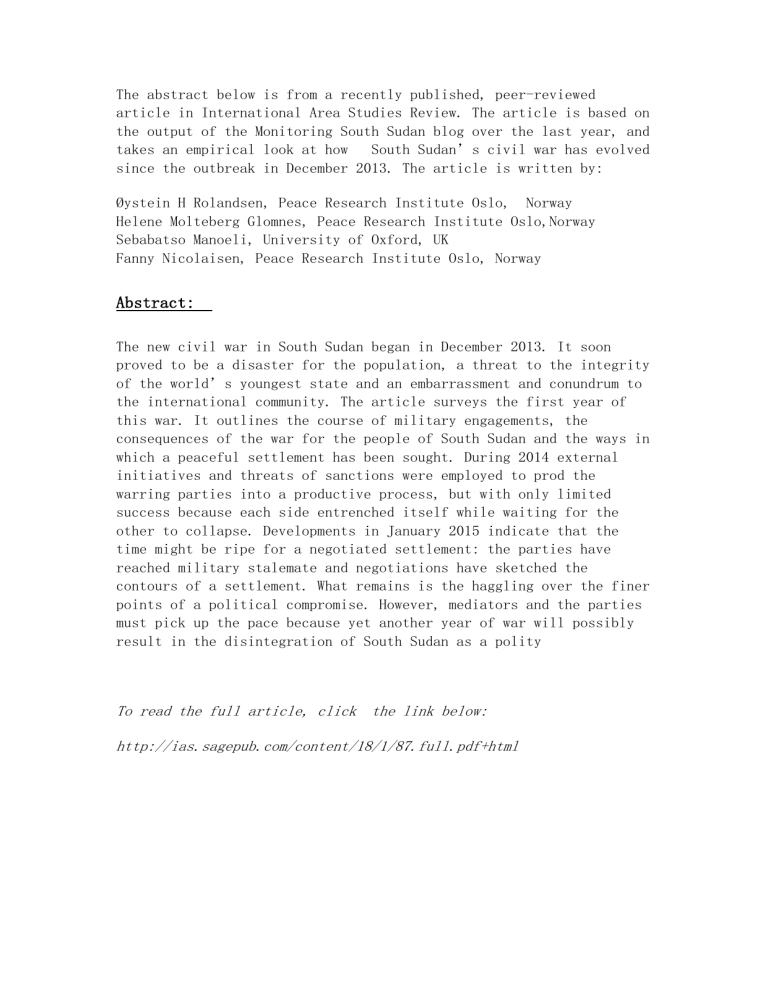
The abstract below is from a recently published, peer-reviewed article in International Area Studies Review. The article is based on the output of the Monitoring South Sudan blog over the last year, and takes an empirical look at how South Sudan’s civil war has evolved since the outbreak in December 2013. The article is written by: Øystein H Rolandsen, Peace Research Institute Oslo, Norway Helene Molteberg Glomnes, Peace Research Institute Oslo,Norway Sebabatso Manoeli, University of Oxford, UK Fanny Nicolaisen, Peace Research Institute Oslo, Norway Abstract: The new civil war in South Sudan began in December 2013. It soon proved to be a disaster for the population, a threat to the integrity of the world’s youngest state and an embarrassment and conundrum to the international community. The article surveys the first year of this war. It outlines the course of military engagements, the consequences of the war for the people of South Sudan and the ways in which a peaceful settlement has been sought. During 2014 external initiatives and threats of sanctions were employed to prod the warring parties into a productive process, but with only limited success because each side entrenched itself while waiting for the other to collapse. Developments in January 2015 indicate that the time might be ripe for a negotiated settlement: the parties have reached military stalemate and negotiations have sketched the contours of a settlement. What remains is the haggling over the finer points of a political compromise. However, mediators and the parties must pick up the pace because yet another year of war will possibly result in the disintegration of South Sudan as a polity To read the full article, click the link below: http://ias.sagepub.com/content/18/1/87.full.pdf+html
